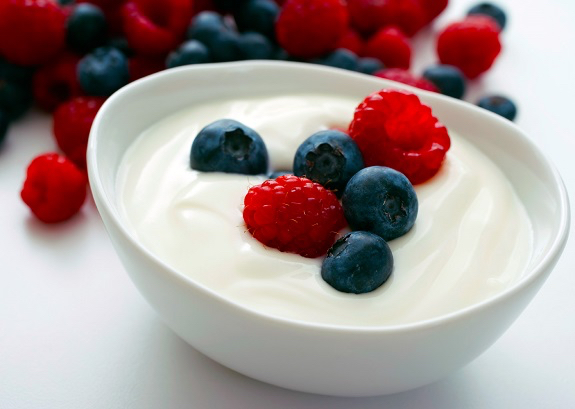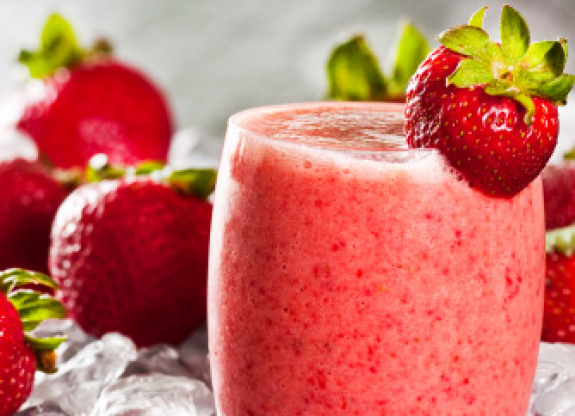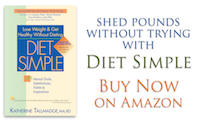Short Bouts of High Intensity Exercise may be as Effective – or Better Than – Walking
- At November 19, 2015
- By Katherine
- In Articles, News
 0
0
For people with Type 2 Diabetes or anyone trying to lose weight, we all know physical activity is a key part of health management. Walking (low – to – medium intensity exercise) is effective, but takes time to get your 10,000 daily pedometer steps.
So what I’m about to tell you may be good news if you have limited time: A new study, recently published in the journal, Circulation, shows there may be an alternate and effective way to lose weight, lower blood pressure, glucose, and cholesterol. People were divided into two groups; one group did 30 minutes of exercise, five days a week at 65% of their target heart rate, while the other did 10 minutes of exercise, three times a day, 5 days a week at 85% of target heart rate. Those who were assigned to the high intensity group ended up exercising more. They also showed larger improvements in glucose levels, lipid profiles (cholesterol), body weight, and cardiovascular fitness as compared to the lower intensity group.
Were the improvements due to the intensity of the exercise or the fact that the high intensity group ended up exercising more? No matter. This study, and others I’ve seen, show short bursts of high intensity exercise will get the results you need to manage your health, so I recommend it to anyone with limited time, and with the ability to exercise intensely.
But if you have even less time, you may not even have to do 10 minutes.
Researchers at the University of Copenhagen in Denmark found ten seconds works! Their study found that a full ten minutes of high intensity exercise may not be necessary and that most people can’t tolerate that amount of intensity. The Danish study found four 10 second bouts of intense exercise may do the trick. The researchers came up with a formula they called 10-20-30: Start with 30 seconds of regular intensity exercise (bike or walking, etc), increase to 20 seconds of medium intensity, then accelerate to 10 seconds of high intensity exercise, and repeat 4 times. And while their subjects were only exercising for 12 minutes they were achieving significant health results, such as lower blood pressures.
That said, my experience with hundreds of clients over the years, proves walking works! You can lose body fat, lower blood pressure, glucose, and cholesterol by walking – not to mention improve thinking and memory, increase energy levels and self-esteem, reduce arthritis pain, and even improve gastrointestinal health. But, if you don’t have the time or the patience for long stretches of walking, don’t worry, as it seems there are other ways to get results! Bump up your exercise intensity for shorter periods of time through the day.
Bottom line: Just move! If walking is your preferred way, that will get you the results you want. But these studies show short bursts of high intensity exercise may also gets results, and perhaps even better results.
For me: I’ll stick with walking to keep my knees and back happy. Though, occasionally, I’ve included four 10-20-30 intervals while getting my 10,000 daily pedometer steps. It seems to improve my endurance, especially when I drink my cafe latte before exercise!
Strong Legs are Linked to a Stronger Brain
- At November 17, 2015
- By Katherine
- In Articles, News
 0
0
Want to make sure your mind stays sharp later in life? Strengthen your legs to strengthen – even increase – your brain.
Everyone wonders what they can do to stay of sound mind as we age. Well, now we may have a strategy: get strong gams!
Researchers studied twins over a period of 10 years. What they found was promising. Those who had increased leg power at the start of the study showed improved cognitive aging after the 10 years. They also found those with stronger legs had larger gray matter volume.
Because of these findings, published recently (November 10th) in the journal Gerontology, researchers intend to do bigger and longer studies. They even plan to look at how other areas of strength might correlate with improved cognition. While they do that, I’m going to do more squats and lunges…after I take a nice, long walk to make sure I can do crosswords for a long time!
Yogurt’s Vast Array of Health Benefits
- At November 16, 2015
- By Katherine
- In Articles, News
 0
0
Yogurt has long been considered a healthy option, as it’s packed with protein, calcium, potassium and other nutrients. It’s a great way to get probiotics, which are important for improving digestive health; but also a vast array of health conditions.
Yogurt consumption has been shown to improve bone health (eating yogurt lead to better bone mineral density) and cardiovascular health (yogurt-eaters were 31% less likely to develop high blood pressure), lower one’s risk of getting Type 2 diabetes, and be a useful tool in weight management.
Many of these benefits come from the probiotics found in yogurt, which are associated with a myriad health improvements. Evidence shows that probiotics could help prevent Type 2 diabetes by preventing insulin resistance and allowing your body to more readily burn body fat. But probiotic benefits may go beyond that. Some studies have even shown that probiotics led to improvements in immune functions in HIV-infected patients.
The research is clear: yogurt is a great addition to any diet, particularly if you want to improve your immune response and powers of healing, bone, heart, gastrointestinal health or improve your weight. Pick some up today! I believe any type will do… as long as you eat at least one or two cups per day.
Trying to Lose Weight? Skip the Diet Soda and Go To The Tap!
- At November 13, 2015
- By Katherine
- In Articles, News
 0
0
People trying to lose weight look for any way to cut calories. We tend to consume a lot of calories in liquid form, so people often think diet beverages are a great way to help them lose weight. But researchers have a better (and cheaper!) solution: good old fashioned water.
In a recent American Journal of Clinical Nutrition study, participants on a weight-loss plan were asked to cut out diet drinks in favor of water after lunch over 24 weeks. Compared to those who stuck with diet soda, those who drank H2O saw greater weight loss and better insulin resistance.
Water is cheaper than diet beverages and is great for digestion. So if you’re looking to improve your health and slim down, skip the can and head for the tap! Your stomach will thank you.
Reason? This study I’ve written about shows artificial sweeteners may reduce your ability to burn body fat, but there may be other reasons, too…
Your Weight Affects Arthritis Flare-Ups and Remissions
- At November 11, 2015
- By Katherine
- In Articles, News
 0
0

Your size affects whether rheumatoid arthritis, a painful and debilitating form of arthritis, flares up or goes into remission. A recent study looked at whether Body Mass Index (BMI) – your weight – had any relationship with rates of long-tern remission of early rheumatoid arthritis (ERA). They looked at patients in the normal (BMI 18.5-24.9), overweight (25-29.9), and obese (≥30) ranges.
Results showed that rheumatoid arthritis sufferers who are at healthy weights were able to stay in remission longer than people in the overweight and obese ranges, who were less likely to achieve long-term remission.
What does that all mean? Your body weight (BMI) isn’t the final word in health, but it shows that weight control and management might play a part in rheumatoid arthritis treatment.
Up Your Orange Intake! Doses of Vitamin C Shown to Effectively Eliminate Cancer Cells
- At November 10, 2015
- By Katherine
- In Articles, News
 0
0
Researchers have studied the effects of Vitamin C, most famously found in oranges, for some time, but results have been mixed. Some studies showed success while others did not, though some of the discrepancy may be explained by how the Vitamin C was administered; injections worked while oral consumption did not.
A recently published study builds on these past findings and might explain the results. Researchers found that Vitamin C is most effective in an oxidized form, meaning it has been combined with oxygen. They specifically found that high doses of oxidized Vitamin C killed mutated colorectal cells. The treatment slowed tumor growth in mice and, in one result, “dramatically changed” the metabolic profile of the mutated cells within just one hour of treatment.
The most exciting part, though? Oxidized Vitamin C has “selective toxicity”, meaning the treatments killed off cancer cells without harming normal cells.
The study was done on mice, so future steps would have to include human testing to make sure the results carry over, but the outcomes are promising and would be a major breakthrough in cancer treatment. Regardless, I’m using these findings as an excuse to add more delicious oranges to my diet!
co-authored by Nik Nartowicz
A Gluten-Free Reality Check
- At August 17, 2015
- By Katherine
- In Articles, News
 0
0
 A whopping 21 percent of Americans are currently making an active attempt to eat gluten-free, according to a Gallup poll published July 23. That dwarfs the 1 percent of the U.S. population diagnosed with celiac disease, the only medical condition that requires gluten-free products for someone with the disease to live a healthy life.
A whopping 21 percent of Americans are currently making an active attempt to eat gluten-free, according to a Gallup poll published July 23. That dwarfs the 1 percent of the U.S. population diagnosed with celiac disease, the only medical condition that requires gluten-free products for someone with the disease to live a healthy life.
More and more Americans are on the anti-wheat warpath trend, as the label “gluten free” appears on everything from craft beer to cat food. For those with celiac disease, a life-threatening autoimmune disorder that destroys the gastrointestinal tract, going gluten-free is critical to avoid damage to the small intestine. For everyone else, though, it is an unnecessary, and – potentially unhealthy, diet.
The gluten-free industry
Such facts haven’t stopped the food industry from taking advantage of the trend, and gluten-free products have grown to represent a $9 billion market in 2014, according to the Burdock Group, which specializes in food market research, among other issues.
Gluten-free foods, especially refined foods processed to make them gluten-free (many made with potato starch or rice starch), cheat the consumer out of the many health benefits of whole grains — such as wheat, barley and rye — and can be seriously lacking in critical nutrients such as fiber iron, zinc, folate, niacin, thiamine, riboflavin, calcium, vitamin B12, phosphorus, fiber and iron.
A whole grain contains all three parts of a grain: the bran, germ and endosperm, as opposed to a refined grain which only contains the endosperm. The nutritional riches are mostly found in the bran and the germ. Decades of research, conducted predominantly on gluten-containing whole wheat, according to Joanne Slavin a professor in the department of food science and nutrition at the University of Minnesota in St. Paul, has found that people who eat whole grains, containing all three parts of the grain, are less likely to be overweight or have diabetes, heart disease or even many cancers, including colorectal cancer, and head and neck cancer in women.
“Whole grain cereals can protect the body against the increased oxidative stress that is involved and/or associated with all the major chronic diseases: metabolic syndrome, obesity, diabetes, cancers, and cardiovascular disease,” according to a comprehensive review in Nutrition Research Reviews. “Whole-grain cereals are good sources of antioxidants (thirty-one compounds or groups of compounds are listed picture above). Some specific mechanisms are today well recognized. For example, food structure influences satiety and the slow release of sugars recommended for type 2 diabetes. Dietary fiber improves gut health, and the antioxidant and anti-inflammatory properties of most phytochemicals can help prevent cancer and cardiovascular disease.
The U.S. Dietary Guidelines Advisory Committee, a group of scientists convened to offer nutrition recommendations for Americans to the federal government, said dietary patterns of the American public are suboptimal and are causally related to poor individual and population health and higher chronic disease rates.” The scientists recommended diets higher in fruits, vegetables, and whole grains than is currently consumed.
“Across all ages and both sexes, the US population does not meet the goal for whole grain intake, The inadequate intake of whole grains leads to underconsumption of several … nutrients of public health concern. “
Most gluten-free processed foods are not made with nutrient-rich, health-protecting whole grains. Furthermore, the gluten-free label has very little to do with the nutritional value of a food. French fries, and many candies, for example, are naturally gluten-free.
People without celiac disease who follow a gluten-free diet (many of whom aren’t even aware of what gluten is or what contains gluten, according to a hilarious recent Jimmy Kimmel piece) have been known to cite numerous reasons for doing so. A common one is a feeling of lethargy or ill health that has come to be associated with eating gluten. However, the feeling of wellness that many attribute to the removal of gluten from their diets is more likely due to the absence of the refined carb- and sugar-laden snacks and desserts that happen to contain the protein (so why not simply remove those foods but keep the healthy gluten-containing foods?).
If you are concerned that you may have celiac disease, you should have your doctor, preferably a gastroenterologist, perform an intestinal biopsy — and you shouldn’t cut gluten until you know for sure that you need to.
Celiac disease cannot be self-diagnosed, and a patient must be eating gluten for the disorder to be properly identified. Until then, you should treat the gluten-free trend as any other fad diet: Don’t get sucked in by the hype.
Bountiful Berries
There are very few foods that match the beautiful color and intense flavor of berries. And, fortunately, these fruits are nutrition superstars.
For many years, most berries were regarded as nutritionally inferior because of their lack of traditional essential nutrients such as vitamins A and C. But that was before scientists recently discovered the presence of large amounts of beneficial phytochemicals (“phyto” is Greek for plant).
Apparently, each berry contains at least 100 nutrients and phytochemicals, the plant compounds with potent powers of healing. Some of the most important phytochemicals in berries are antioxidants, powerful substances believed to reduce inflammation, improve immune function and help prevent heart disease and cancers.
Antioxidants are compounds that absorb oxygen free radicals — molecules that cause oxidation in the body’s cells. Scientists believe that these molecules cause most of the diseases of aging, such as immune system decline, arthritis, heart disease, cancer and neurological impairments affecting cognition and balance. Think of oxidation as being similar to rusting. Or imagine an apple slice turning brown. By simply adding lemon juice, an antioxidant, the apple’s flesh stays fresh and prevents the browning or oxidation.
A similar thing happens in your body. Oxidation is constantly occurring in your cells because of environmental pollutants, smoking, exposure to the sun, heat generated through basic metabolic functioning, unhealthy diets and other factors. It takes a large supply of antioxidants to counter this. Berries have been found to have one of the highest antioxidant scores of all fruits and vegetables.
But there are other good reasons to eat berries. The berry family contains 300 to 400 beneficial, disease-fighting chemicals. The phytochemicals in berries, depending on the type, also stimulate the immune system, reduce inflammation, enhance cancer-fighting enzymes, positively influence hormone metabolism, have antibacterial and antiviral effects and may even reverse some aspects of brain aging.
The most potent berries are the more deeply colored varieties, especially blackberries, blueberries and cranberries, followed by raspberries, strawberries and cherries (not technically a berry, but similar nutritionally) but all more potent than most other fruits. Their color (blue/purple) is provided by one of the most powerful phytochemicals, called anthocyanins, which berries synthesize to protect themselves from the elements.
Anthocyanins, a type of polyphenol (polyphenols are also found in other fruits and vegetables), reduce inflammation, according to a 2015 article in the American Journal of Clinical Nutrition, which plays a role in protecting against cancers, heart disease, and other chronic diseases. They may also play a role in preventing risk of Alzheimers and Parkinson’s Diseases, according to many years of animal research published in a 2014 article in Neural Regeneration Research.
Cranberries, may be responsible for helping to prevent urinary tract infections, stomach ulcers, gum disease and even ear infections in children. Cranberries are also effective against antibiotic-resistant bacteria — and 20 percent of urinary tract infections are resistant to antibiotics. The phytochemicals in cranberries work by blocking the disease-causing bacteria and preventing it from adhering to human cell walls.
“There is strong experimental evidence that cranberry bioactives have favorable effects on blood pressure, glucose metabolism, lipoprotein profiles, oxidative stress, inflammation, and endothelial (the lining of blood vessels),” said Jeffrey Bloomberg, et al, in the journal, Advances in Nutrition. But all berries have strong health benefits.
A study published in 2014 in the Journal of Nutrition found a reduction in insulin resistance, especially with Anthocyanins (found in abundance in berries). According to the study, these benefits can be “found with intakes readily achieved in the diet.” They may even improve bone density in women, according to a study published in 2012 in the Journal of Bone Mineral Research and a 2014 article in Osteoporosis International. This may be caused by their antioxidant and anti-inflammatory properties, which may help prevent bone breakdown.
A study published in Neurology in 2012 found a high flavonoids diet (found in berries among other fruits and vegetables) was correlated with a reduction in the incidence of Parkinson’s Disease in men.
Resveratrol
New research has found that raspberries, blueberries, cranberries and huckleberries contain a phytochemical called resveratrol, also present in wine, which is thought to help prevent cancer, cardiovascular disease, and is implicated as an important compound for health.
Strawberries contain large amounts of phytochemicals called ellagitannins, which are also in raspberries and blackberries. Studies at the UCLA Center for Human Nutrition found those berries are capable of inhibiting a number of key steps in the development of cardiovascular disease and may have immense potential for the prevention and treatment of heart disease and stroke. Strawberries are also high in antioxidant Vitamin C and folic acid, important in preventing birth defects.
“Strawberries contain a variety of bioactive compounds that can promote longevity and quality of life. For humans, these compounds can act as antioxidants, serve as anti-inflammatory agents, improve cell to cell communication, cause cancer cells to die, detoxify carcinogens — a number of benefits consistent with health and disease risk reduction.” said Dr. Burton-Freeman at an American Academy of Nutrition and Dietetics conference.
While most of what scientists know about berries has been determined in animal studies and in labs using cell cultures, new human studies are showing promising results.
Berries are an ideal food. Besides being absolutely delicious and colorful on a plate, they’re loaded with nutrients, vitamins, minerals, fiber, and they’re low in calories. They have maximum flavor and nutrient content when picked at ripeness. Freezing them when ripe or buying ripe frozen berries is a great alternative. But, simply ripening a berry on your kitchen counter will increase its phytochemical content, too.
Berries can be eaten morning, noon or night – whatever your preference. I eat berries every morning on my oatmeal. In the summer, I’ll use any fresh local berry but in the winter, I stick with frozen blueberries.
“Berries are extremely versatile; they fit perfectly with any meal or snack,” says Janie Hibler, author of “The Berry Bible” (William Morrow, 2004). In “The Berry Bible,” Hibler provides a berry encyclopedia and berry recipes ranging from smoothies, drinks, and breads to soups, salads, salsas, main courses, and desserts.
So, what are some ways we can eat berries every day?
“A no-brainer,” she says, “is a berry smoothie for breakfast.” For lunch, she says, throw a handful into your salad. For snacks, carry dried berries and nuts. At dinner, berries go beautifully with meats, grains and main courses.
You will eat more berries if you simply keep them on hand and ready to grab. Get them now when they’re fresh and freeze them yourself. Frozen blueberries are fun snacks for kids to pop in their mouths, like hard candy. You can also make berry popcicles, syrups for pancakes and spritzers.
Berry Coulis
Hibler recommends always having berry purees, or “coulis” on hand. “A sauce rivaled by none,” she says. But they also are great added to drinks, smoothies, yogurts, cereal, you name it.
To make a coulis, rinse and drain the berries, process in a food processor. Add a little sugar or even liqueur, if desired. It will keep in your refrigerator for three to four days or be frozen for a month.
Some of my favorite berry recipes:
Spinach and Strawberry Salad with Toasted Almonds and Balsamic Vinaigrette
Katherine’s Spicy Mexican Salsa with Strawberries
Soupe aux Fraises et Rhubarbe (Strawberry Rhubarb Soup)
Kjerstin’s Curried Chicken Salad with Strawberries and Toasted Almonds
Tallmadge’s Top Ten (Surprising & Affordable) Foods for 2015
- At March 22, 2015
- By Katherine
- In News
 0
0
Join Katherine for lunch on Tuesday, March 24, as she reveals…
Tallmadge’s Top Ten (Surprising & Affordable) Foods for 2015
Tuesday, March 24 at 11:15 Bar opens, 12:15 Lunch starts, 1 – 2 pm Presentation and Q&A
The Women’s National Democratic Club
1526 New Hampshire Ave., N.W.
Washington, DC 20036
Burning Body Fat with Coffee: 9 Tips for Your Fitness & Health
- At March 22, 2015
- By Katherine
- In Articles, News
 0
0
You’ve heard about coffee’s benefits. But have you heard them all? What about its fat-burning potential? Earl Williams, owner of Georgetown’s Definitions Personal Trainers’ Gym, interviews Katherine Tallmadge (me), about coffee, the scientific facts about its health and fitness benefits, and 9 tips for how you can make coffee work for you.
Earl: I developed Metabolic Resistance Training (MRT) to help clients optimize fat burn and I’m always looking for other ways to complement this. What are the benefits of drinking coffee for those who exercise with the goal of fat loss?
Katherine: The caffeine in coffee enhances physical performance. “Caffeine may act directly on muscle to enhance its capacity to exercise,” according to “Essentials of Exercise Physiology,” by William D. McArdle and Frank L. Katch. It facilitates the use of fat as fuel for exercise, thus sparing the body’s limited glycogen reserves, according to McArdle and Katch. “Coffee can be a positive part of a sports diet if a person chooses to drink a cup of coffee before they work out,” said Nancy Clark, author of Sports Nutrition Guidebook. Coffee / caffeine also increases metabolism causing the body to burn more calories, according to a study published in the American Journal of Clinical Nutrition (1).
Earl: Coffee drinkers commonly add sugar, artificial sweeteners, milk, syrups, etc. How do these additives affect the benefits of drinking coffee?
Katherine: Most of them add calories. So, keep in mind that one syrupy, high calorie drink (some as high as 500 calories — 1⁄4 of one day’s calorie needs) can make the difference between losing and not losing weight. That said, a Latte or Cappuccino are especially good to drink, not only because of the caffeine, but also because of the protein, carbohydrate, potassium and other nutrients contained in the milk.
Earl: Is there a window of time before, during, or after the workout that coffee should be consumed?
Katherine: “People have different sensitivities and reactions to caffeine,” said Clark. But, “peak concentration is within 30 and 120 minutes after ingestion to exert an influence on the nervous, cardiovascular and muscular systems,” according to McArdle and Katch.
Earl: Any guidance on the daily amount consumed?
Katherine: That would be personalized and depend on a person’s tolerance level of coffee/caffeine. But “drinking the amount of caffeine (330 mg*) in 2.5 cups of coffee one hour before exercising significantly extends endurance in intense aerobic exercise,” according to McArdle and Katch. Which means you can exercise longer before feeling its effects, thus increasing endurance.
Earl: Caffeine in coffee helps mobilize fat in tissues and the bloodstream making the fatty acids available as fuel for exercise—thus sparing and making accessible—muscle and liver glycogen for performance. What are fatty acids?
Katherine: Fat, called triglycerides, partly comes from food and ends up in the bloodstream. When you exercise regularly (every 24 hours), fat/triglycerides are sent into the muscles where it is burned as fuel. If you do not exercise often enough, the triglycerides stay in the bloodstream causing obesity, high bad (LDL) cholesterol and high blood triglycerides – all associated with an increased risk of heart disease.
Earl: The fitness community once thought coffee was a diuretic and could not provide the hydration water could. Is this still the case?
Katherine: Coffee and tea are now considered good hydrators, according to the most recent scientific analysis and report by the National Academy of Science’s Food and Nutrition Board (2).
Earl: Under what circumstances should coffee be avoided?
Katherine: You should ask your doctor if you should avoid or limit coffee, especially if you have high blood pressure or are pregnant.
Earl: What are some of the other health benefits of drinking coffee?
Katherine: The research is promising. Some recent studies suggest that coffee may be associated with a reduced incidence of all causes of death and cardiovascular disease (3), of Type 2 Diabetes (4), Parkinson’s Disease (5), Alzheimer’s (6), Multiple Sclerosis (7), liver cancer(8) – the second leading cause of cancer deaths world-wide – and perhaps other health conditions. Of course, though exciting, the research is just in its beginning stages. More controlled human clinical studies are needed to learn more specifics as to why and how coffee may or may not work to improve your health.
Earl: Any other thoughts about coffee?
Katherine: It is important that the exerciser test the effect of different levels of coffee/caffeine on their performance several times to determine the ideal amount and achieve the best level of performance before any major competition or long term bout of exercise.
(8) World Cancer Research Fund International’s Continuous Update Project (CUP)





![oranges[1]](https://katherinetallmadge.com/wp-content/uploads/2015/11/oranges1.jpg)













